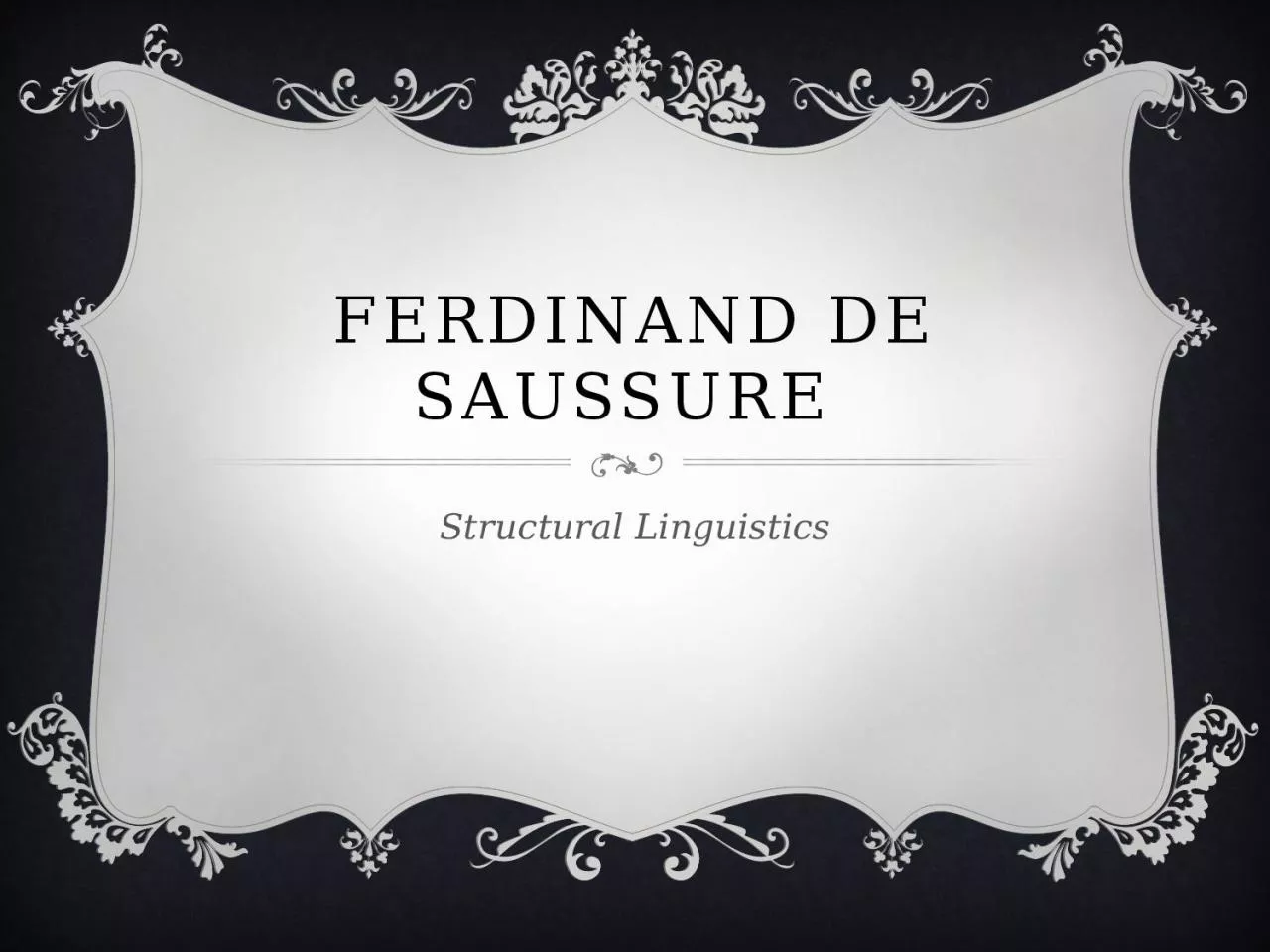

Language Thought COMMON SENSE SAYS that readymade ideas exist before words 646 ACTUALLY Without language thought is a vague uncharted nebula There are no preexisting ideas and nothing is distinct before the appearance of language 649 ID: 1017759
Download Presentation The PPT/PDF document "Ferdinand de Saussure Structural Lingui..." is the property of its rightful owner. Permission is granted to download and print the materials on this web site for personal, non-commercial use only, and to display it on your personal computer provided you do not modify the materials and that you retain all copyright notices contained in the materials. By downloading content from our website, you accept the terms of this agreement.
1. Ferdinand de Saussure Structural Linguistics
2. Language / Thought COMMON SENSE SAYS: “that ready-made ideas exist before words” (646).ACTUALLY: “Without language, thought is a vague, uncharted nebula. There are no pre-existing ideas, and nothing is distinct before the appearance of language” (649).“Structural Linguistics” “THE LINGUISTIC TURN”
3. Semiotics: Study of The Linguistic Sign
4. Signifier - Signified“The linguistic sign is arbitrary” (647)“The term [arbitrary] should not imply that the choice of the signifier is left entirely to the speaker […]; I mean that it is unmotivated, i.e arbitrary in that it actually has no natural connection with the signified.” (648)
5. Value & Difference“Language is a system of interdependent terms in which the value of each term results solely from the simultaneous presence of others.” (650). Value: the function of a sign within the system.
6. “Language can … be compared with a sheet of paper: thought is the front and the sound the back; one cannot cut the front without cutting the back at the same time; likewise in language, one can neither divide sound from thought nor thought from sound.” (649)
7. SIGNS & IDEAS WORK by NEGATION“[Concepts] are purely differential and defined not by their positive content but negatively by their relations with the other terms of the system. Their more precise characteristic is in being what the others are not” (651).KEYS: Signs are both ARBITRARY and DIFFERENTIAL, i.e. based on a function in a system.
8. SOCIAL FORM / STructure“The arbitrary nature of the sign explains…why the social fact alone can create a linguistic system. The community is necessary […]; by himself the individual is incapable of fixing a single value” (649).The sheet of paper (649).
9. F. Boaz, Handbook oF american indian languages, 1911To take again the example of English, we find that the idea of WATER is expressed in a great variety of forms: one term serves to express water as a LIQUID; another one, water in the form of a large expanse (LAKE); others, water as running in a large body or in a small body (RIVER and BROOK); still other terms express water in the form of RAIN, DEW, WAVE, and FOAM. It is perfectly conceivable that this variety of ideas, each of which is expressed by a single independent term in English, might be expressed in other languages by derivations from the same term. Another example of the same kind, the words for SNOW in Eskimo, may be given. Here we find one word, aput, expressing SNOW ON THE GROUND; another one, qana, FALLING SNOW; a third one, piqsirpoq, DRIFTING SNOW; and a fourth one, qimuqsuq, A SNOWDRIFT. (25-26).
10. “Mock Turtle”